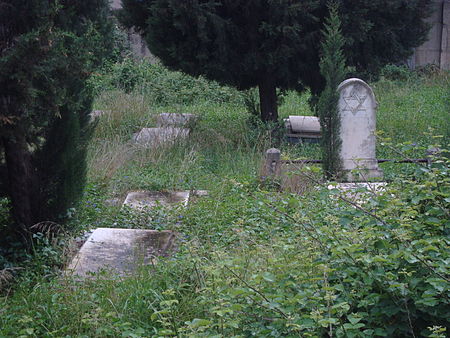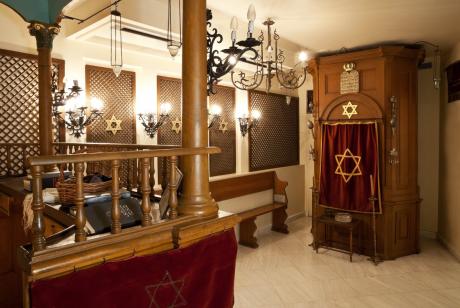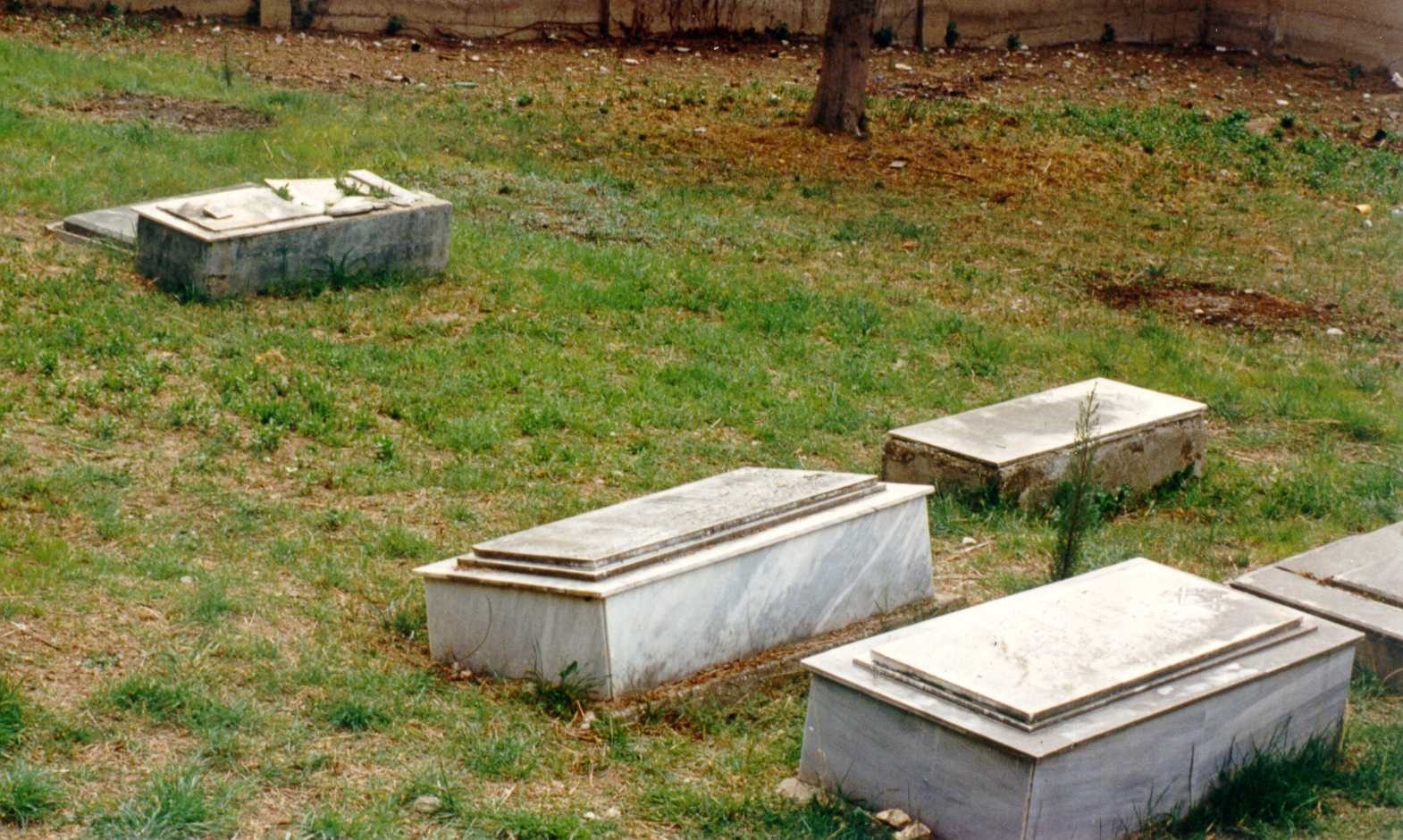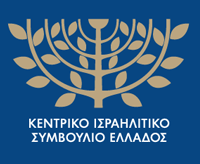THE JEWISH COMMUNITY OF PATRAS
CHRONOLOGY
 The timeless presence of Jews in Patras since ancient times is remembered by historians, learned rabbis and also by Jewish burial inscriptions. Their existence there dates back to the time of Seleucus Nicaron of Syria, in 300 BC. During the period of the Roman Empire, the Jews as Roman citizens avoided persecution for religious reasons and later, in the Byzantine years, they developed a special dynamism in commerce and the arts, which marked the daily life of the inhabitants and the progress of the city.
The timeless presence of Jews in Patras since ancient times is remembered by historians, learned rabbis and also by Jewish burial inscriptions. Their existence there dates back to the time of Seleucus Nicaron of Syria, in 300 BC. During the period of the Roman Empire, the Jews as Roman citizens avoided persecution for religious reasons and later, in the Byzantine years, they developed a special dynamism in commerce and the arts, which marked the daily life of the inhabitants and the progress of the city.
The occupations of the Jews were trade, crafts, textile dyeing, while they were also involved in the sciences, mainly as doctors. The lowest class were innkeepers, guards, employees, etc. It was reported that a Jewish family monopolized - during the 18th century - the city's import trade. Their Jewish shops were located in the coastal district "Civdi", between the current main streets of Ag. Andreou and Gounari. Some of them were property and land owners.
From the time of the Frankish occupation - in 1850 - there were four Synagogues listed as far back as the 17th century. Enlightened rabbis who distinguished themselves for their education, such as Moses Yosef Gabai, Megir Shemtov, Sadia Firmon, etc., were educated in them. who translated sacred texts and books.
In the 12th century, the Spanish rabbi Benjamin ben Jonah, who visited Patras, noted in his "Itinerary" the existence of 50 Jews living in large houses and that he met Isaac, Jacob and Samuel. Historians report the presence of Jews in neighboring Andravida from the 13th century, which was the capital of the Principality of Arcadia. It should be noted that from ancient times Jews also lived in other cities of the Peloponnese, such as in the nearby neighboring city of Glarenda, in Corinth, Koroni, Methoni, Kyparissia, Sparta and Mystras, where their quarter outside the wall, in "Exochori", is particularly mentioned. who "constituted another small Judea, with a Synagogue".
When the Venetians moved - in 1430 - their commercial center to Nafpaktos, the economic life of Patras was adversely affected, since several residents, including Jews, settled there. The Jewish population of Patras increased significantly after the expulsion of the Jews from Spain in 1492. But soon new immigrants from Sicily and Apulia were added.
In the 17th century the Community numbered 1.500 members, which constituted a large part of the city's population. The great plague epidemic, in 1745, attacked the population and decimated many families. Then 1.000 Christian, 250 Turkish and 10 Jewish families remained.
Since 1767 there have been rivalries between Christians and Jews, so that in the period 1798 - 99 the French consul Pouqueville considered the 17 remaining Jewish families "poor remnants of the city's Jewish community". The prevailing anti-Semitic climate was also mentioned by Dodwell in 1805, but it intensified with the outbreak of the revolution in 1821, which led to the annihilation of the Community.
At the beginning of the 19th century the city began to experience a rapid development and reconstruction. The Community was reconstituted in 1905 and at the end of the century other Jews from Corfu, Zakynthos, Preveza and Arta settled in Patras. The minority Jews of Agrinio belonged to the Community of Patras. As reported by the English Captain Leak, in 1804, there were 40 Jewish homes in Agrinio. It is obvious that commercial reasons led them there.

 THE SYNAGOGUE
THE SYNAGOGUE
In 1917, the new Synagogue was built on a plot of land owned by the Community, at 34 Pantanassas Street. It functioned on the first floor of the building, which was separated by a large room, where the school functioned, and next to it was a spacious women's sanctuary separated by a railing from the sanctuary Step. On each side the Synagogue had corridors and the seats of the faithful. In the middle was the holy step and to the east the "Ark" (Aron Akodes), visible from all sides, according to the Sephardic tradition. The furniture of the Synagogue had a Venetian style, while the holy scrolls of the Torah, "sefarim", were kept in elaborate wooden cases "Tikim", in one of which there was a dedication of the Jewess Elhai, from Heraklion, dated 1913.
 THE JEWISH CEMETERIES
THE JEWISH CEMETERIES
The Jews of Patras lived in the northwestern part of the Castle, in the areas of Vlateros, Agialexiotissa and, during the Frankish period, in Aroi, which they later called "Tsifout Mahala", also known as "Jewish Quarter". Near the Jewish quarter there was the old cemetery with the toponym "Jewish monuments" (photo top), a toponym that has been preserved to this day. Jewish tombstones have been found in the area. Since 1880, when the first municipal cemetery was created in the "Zavlani" area, another space was allocated, where the newest Jewish cemetery (photo on the left) operated until the period of the Occupation. Today the cemetery is maintained by the Cultural Association of Zavlani.
OCCUPATION - POSTWAR
In 1928, there were 161 Jews in Patras, while in 1940, together with the community of Agrinio, they amounted to 265 people. During the period of Nazi persecution, 1943 - 44, the Jews fled to the surrounding villages. Nevertheless, 113 people were exterminated in Hitler's camps, that is, the Community lost 63% of its population. In 1946 the Community numbered 120 people while 4 hostages returned. In the following years, the Jewish population gradually began to decrease with the settlement of Jews in other cities so that the Community of Patras, like that of Agrinio, was led to wither and dissolve in 1991. The interior of the Synagogue, shortly before its demolition, was moved in 1984 and placed in the Jewish Museum of Greece in Athens.
ABOUT:
Christos Ath. Moulias: "THE JEWISH PRESENCE IN PATRAS FROM ANCIENT TIMES UNTIL TODAY", Ed. KISE 2015.

